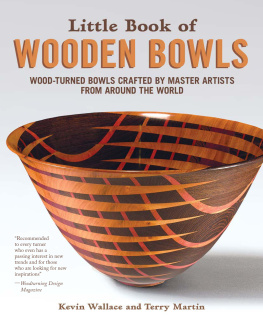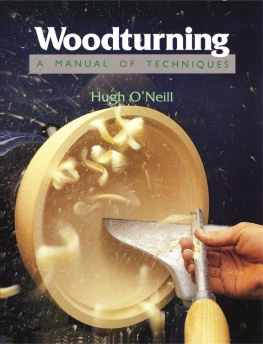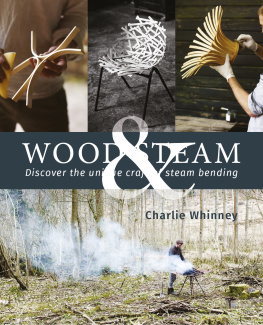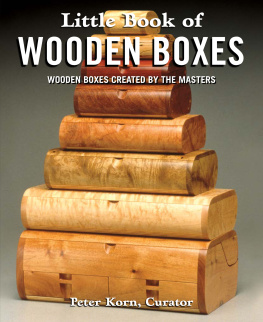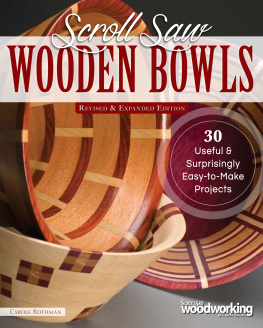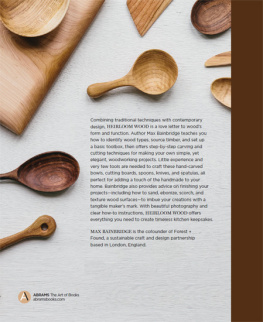Kevin Wallace - Little Book of Wooden Bowls: Wood-Turned Bowls Crafted by Master Artists from Around the World (Fox Chapel Publishing) Profiles of 31 Fine Woodturners & Artists and Studio-Quality Photos of Their Work
Here you can read online Kevin Wallace - Little Book of Wooden Bowls: Wood-Turned Bowls Crafted by Master Artists from Around the World (Fox Chapel Publishing) Profiles of 31 Fine Woodturners & Artists and Studio-Quality Photos of Their Work full text of the book (entire story) in english for free. Download pdf and epub, get meaning, cover and reviews about this ebook. year: 2019, publisher: Fox Chapel Publishing, genre: Non-fiction. Description of the work, (preface) as well as reviews are available. Best literature library LitArk.com created for fans of good reading and offers a wide selection of genres:
Romance novel
Science fiction
Adventure
Detective
Science
History
Home and family
Prose
Art
Politics
Computer
Non-fiction
Religion
Business
Children
Humor
Choose a favorite category and find really read worthwhile books. Enjoy immersion in the world of imagination, feel the emotions of the characters or learn something new for yourself, make an fascinating discovery.
- Book:Little Book of Wooden Bowls: Wood-Turned Bowls Crafted by Master Artists from Around the World (Fox Chapel Publishing) Profiles of 31 Fine Woodturners & Artists and Studio-Quality Photos of Their Work
- Author:
- Publisher:Fox Chapel Publishing
- Genre:
- Year:2019
- Rating:4 / 5
- Favourites:Add to favourites
- Your mark:
Little Book of Wooden Bowls: Wood-Turned Bowls Crafted by Master Artists from Around the World (Fox Chapel Publishing) Profiles of 31 Fine Woodturners & Artists and Studio-Quality Photos of Their Work: summary, description and annotation
We offer to read an annotation, description, summary or preface (depends on what the author of the book "Little Book of Wooden Bowls: Wood-Turned Bowls Crafted by Master Artists from Around the World (Fox Chapel Publishing) Profiles of 31 Fine Woodturners & Artists and Studio-Quality Photos of Their Work" wrote himself). If you haven't found the necessary information about the book — write in the comments, we will try to find it.
This craftsmans companion celebrates the woodturners and innovative artists from around the world who have taken bowl-making to a higher level of aesthetic form.
Little Book of Wooden Bowls features 31 of todays finest woodworkers and elite artisanssuch as Virginia Dodson, Binh Pho, Harvey Fein, Paul Fennell, and Marilyn Campbellwho share their personal motivations, thought processes, and the studio techniques they employ to bring out the breathtaking beauty of wood.
Each artists profile includes full-color, studio-quality photographs of their most spectacular and inspirational work, including vessels, bowls, platters, and more, along with insights on their design ideas and objectives.
Curated by prominent wood art authorities Kevin Wallace and Terry Martin, this book is sure to become a treasure in every woodworking library. Co-author Kevin Wallace is the Director of the Beatrice Wood Center for the Arts in Ojai, California, and co-author Terry Martin is an internationally-known woodturner who gives presentations around the world on woodturning.
Presented in an attractive pocket-sized 5.75-inch by 7-inch format, Little Book of Wooden Bowls will make a cherished gift for any woodturner!
Little Book of Wooden Bowls is a joy to browse, and highly recommended as a wondrous repository of ideas and inspiration for woodworkers.
The Midwest Book Review
Kevin Wallace: author's other books
Who wrote Little Book of Wooden Bowls: Wood-Turned Bowls Crafted by Master Artists from Around the World (Fox Chapel Publishing) Profiles of 31 Fine Woodturners & Artists and Studio-Quality Photos of Their Work? Find out the surname, the name of the author of the book and a list of all author's works by series.

